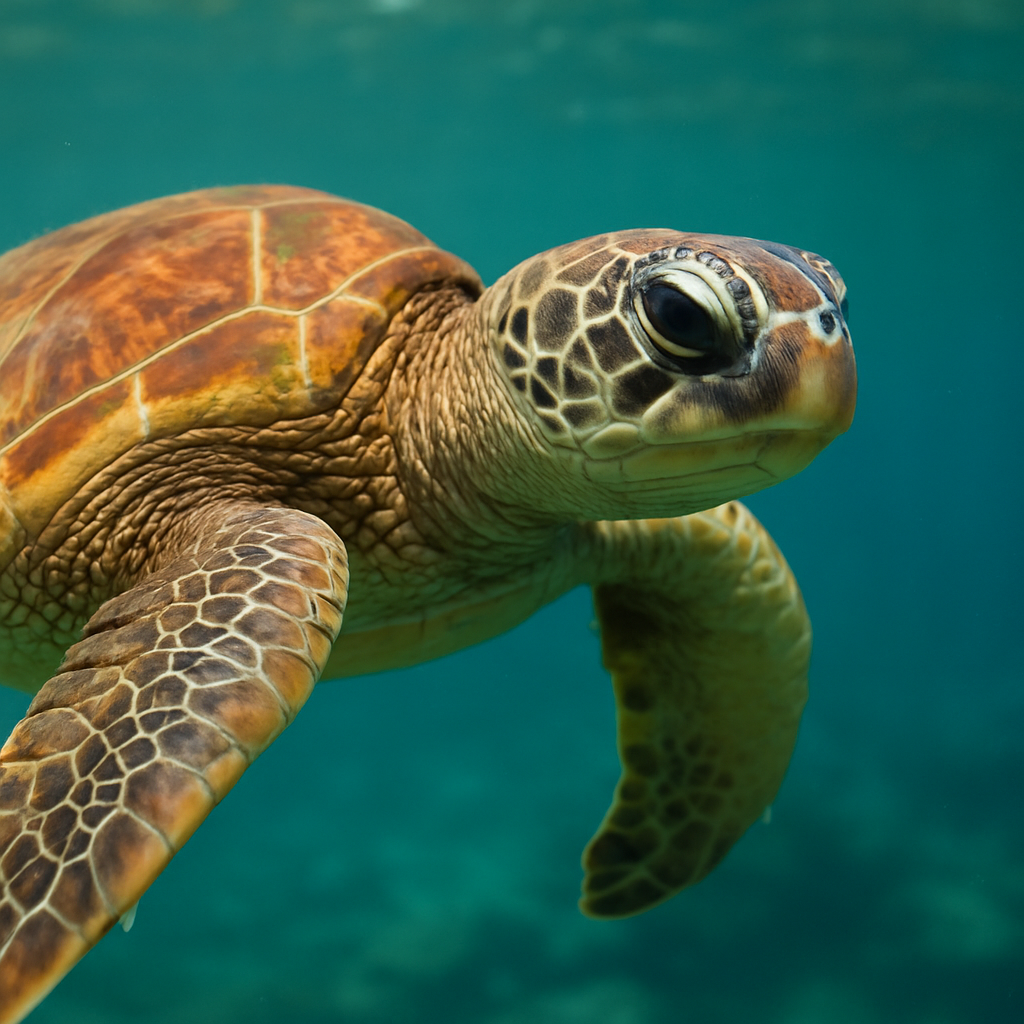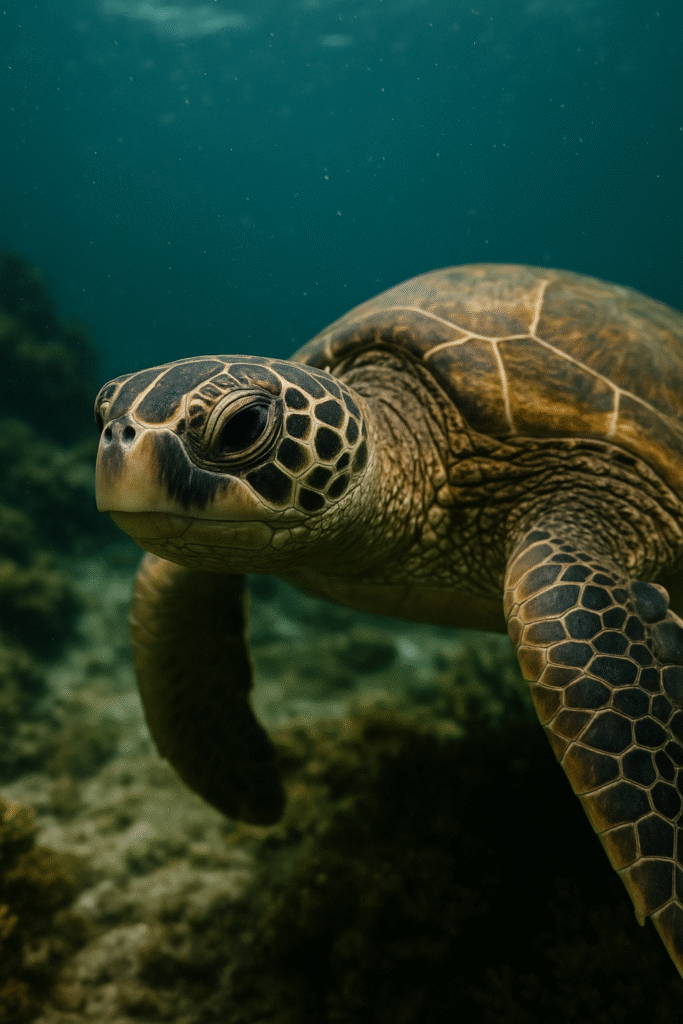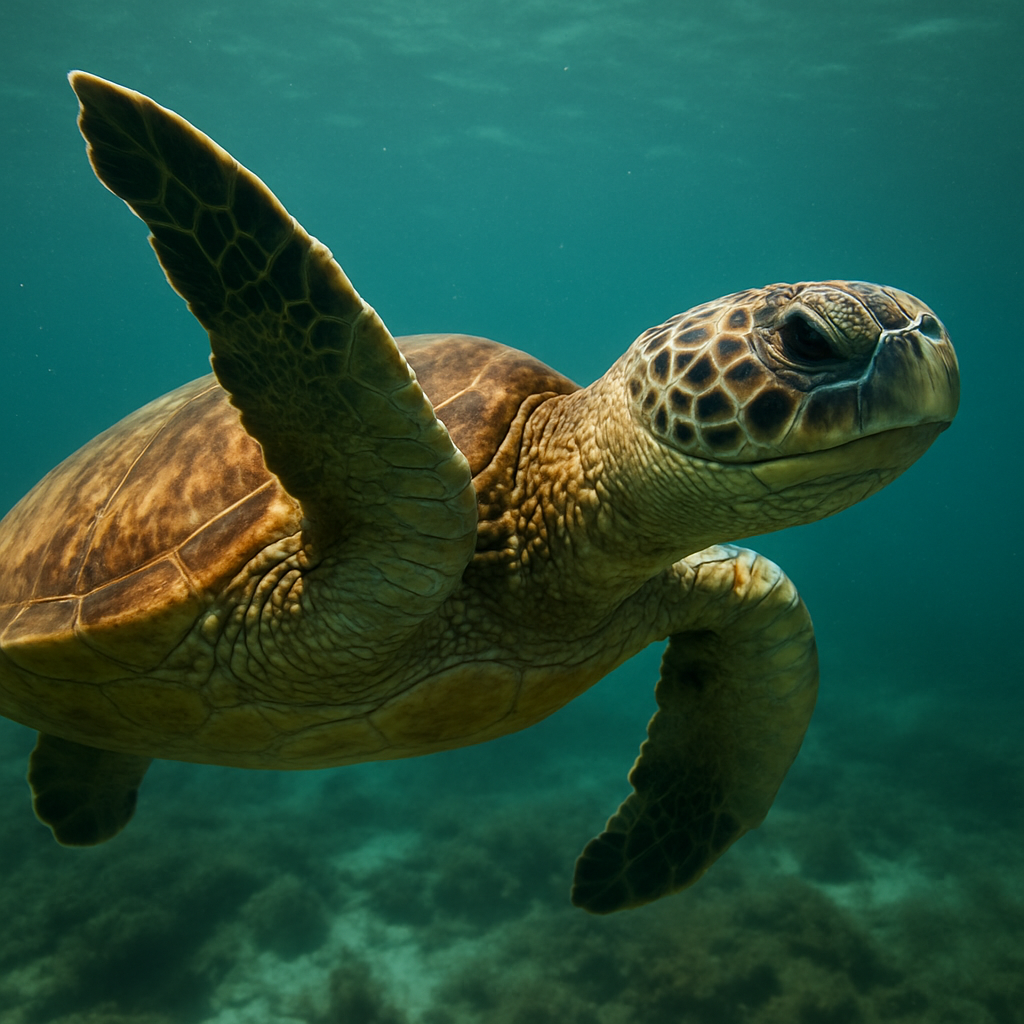In the restless sweep of the world’s oceans, where tides write their ceaseless hymns upon shifting shores, there moves a creature older than the continents themselves. The sea turtle, armored voyager and silent witness to 100 million years, glides through the blue with a grace that belies its weight. To see one rise from the depths, head breaking the surface in a quiet gasp, is to glimpse a living relic of an age when dinosaurs ruled the earth.

A Life Measured in Journeys
Sea turtles are defined not by territories but by odysseys. Hatchlings, no larger than a child’s palm, launch themselves into moonlit surf, scattering into a dark unknown. Few will survive the gauntlet of predators, currents, and hunger. Those that endure embark on migrations spanning thousands of miles—traversing entire oceans, guided by an ancient compass inscribed in their very cells.
For decades, scientists puzzled at how these reptiles navigate so unerringly between nesting beaches and feeding grounds. The answer lies partly in the Earth’s magnetic field, an invisible map etched into their memory at birth. Each turtle, it seems, carries the planet itself within its mind.
Sacred in Story, Eternal in Symbol
Across cultures, the sea turtle has always loomed large. In Hindu mythology, Vishnu takes the form of Kurma, a giant turtle whose back supports the weight of gods and mountains. In Pacific Island traditions, turtles are guardians and navigators, symbols of fertility and longevity. Even in Native American creation stories, the very land was said to rest on the back of a great turtle, giving rise to the name “Turtle Island” for North America.

This reverence is no coincidence. To watch a turtle swim—its flippers like wings, its passage unhurried—is to witness endurance itself. It embodies the wisdom of patience, the serenity of survival without haste.
The Fragile Giant
And yet, this ancient mariner faces perils that no myth could have foretold. Plastic bags drifting like phantom jellyfish lure turtles to fatal meals. Fishing nets, indiscriminate in their harvest, entangle them in unseen prisons. Rising seas consume the nesting beaches where new generations should emerge. Of the seven species of sea turtle, nearly all are threatened or endangered.
The paradox is stark: the creature that has outlived the extinction of dinosaurs now teeters on the edge because of us.
The Pulse of Eternity
Conservationists race to protect them—shielding nesting sites, patrolling coasts, and advocating for cleaner oceans. Yet beyond laws and sanctuaries, the survival of sea turtles may hinge on something deeper: our willingness to remember that their fate is bound to ours. They are not relics of a fading world, but companions in the unfolding story of the sea.
To see a turtle emerge onto a moonlit beach, its massive form dragging across the sand, is to understand that time itself has a heartbeat. Each egg buried in the sand is both memory and prophecy: proof that endurance, though fragile, can also be eternal.

The sea turtle does not rage against time. It simply moves with it, riding the currents of eternity. In its slow persistence lies a lesson for humanity—that survival is not only strength, but balance, patience, and respect for the tides that carry us all.


Reply